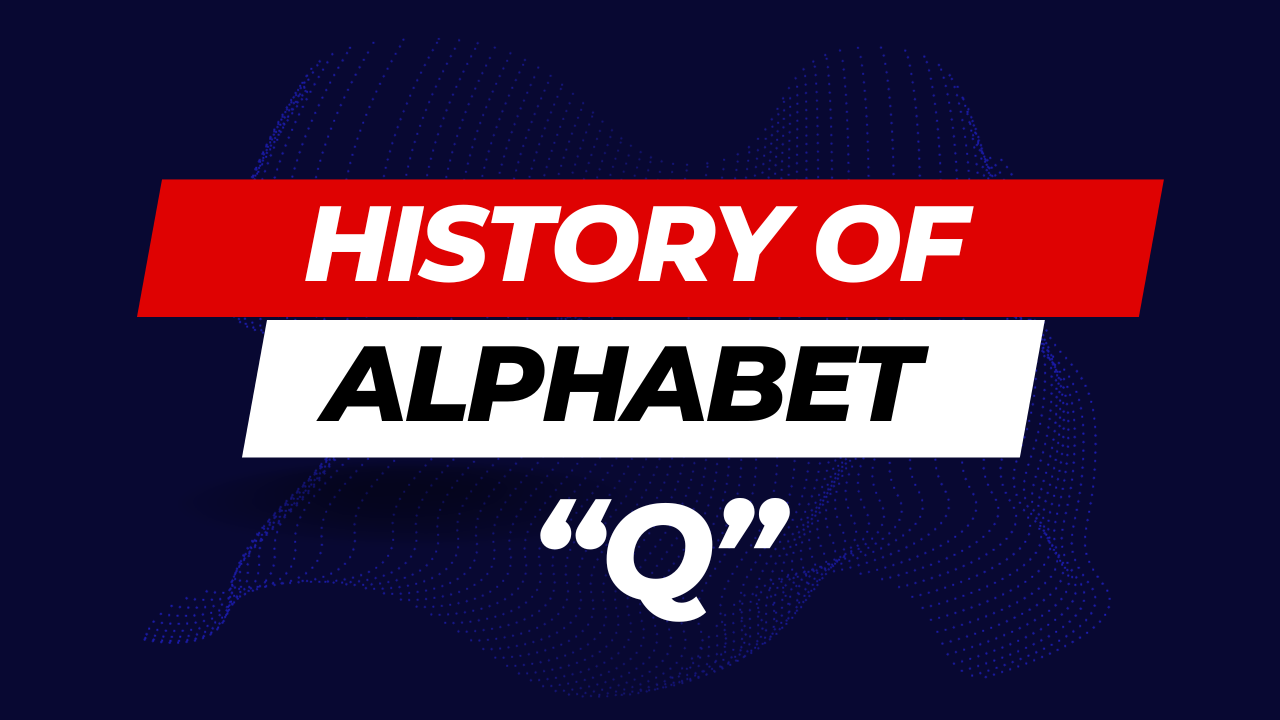The Enigma of "Q": A Brief Introduction:
In the vast tapestry of alphabets, "Q" stands out as a mysterious character. Its curved tail and intriguing pronunciation have baffled linguists and language enthusiasts for centuries. Let's delve into the origins of this enigmatic letter.
Quintessential Beginnings: Tracing the Roots:
"Q" finds its origins in the Phoenician alphabet, an ancient script that laid the foundation for various modern alphabets. Initially representing a symbol for a circle with a line beneath, it transformed over centuries, traveling through ancient Greek and Latin scripts.
The Influence of Latin: Quid Novi?
Latin, the language of the ancient Romans, played a pivotal role in shaping the modern "Q." In Latin, "Q" appeared as a rounded "O" followed by a small line, resembling the letter we recognize today. This evolution marked a significant shift in the letter's appearance and phonetic usage.
Medieval Manuscripts and the Majestic "Q":
In medieval manuscripts, the letter "Q" showcased exquisite calligraphy. Scribes embellished it with elaborate curves and intricate designs, turning it into a work of art. This artistic rendition of the letter added to its mystique, making it a symbol of elegance and grace.
Q in Mathematics: The Quest for Meaning:
In mathematics, "Q" often represents rational numbers, adding a layer of complexity to its significance. The interplay between mathematics and language demonstrates the versatility of this intriguing letter, transcending linguistic boundaries.
Curious Curves and Controversies: Unique Features of "Q":
The letter "Q" boasts unique features, such as its rarity in the English language. It is often accompanied by the letter "U," creating a distinctive sound. This partnership, however, has sparked debates and linguistic controversies, enriching the narrative of "Q."
FAQs about the History of Alphabet "Q":
What is the origin of the letter "Q"? The letter "Q" traces its roots back to the Phoenician alphabet, evolving through ancient scripts like Greek and Latin, before taking its modern form.
Why is "Q" often followed by "U" in English words? In English, "Q" is almost always followed by "U." This pairing dates back to Latin and has become a linguistic norm in the English language.
Are there languages without the letter "Q"? Yes, several languages, especially in East Asia, do not incorporate the letter "Q" into their alphabets. Each language's alphabet reflects its unique phonetic needs.
How is "Q" used in mathematics? In mathematics, "Q" represents rational numbers, highlighting its significance beyond language as a symbol of mathematical concepts.
Is there a connection between the letter "Q" and symbolism? Yes, the letter "Q" often carries symbolic meanings in various contexts, representing elegance, uniqueness, and mystery.
Can you provide examples of famous words starting with "Q"? Certainly! Some famous words starting with "Q" include "queen," "quasar," "quintessential," and "question," each contributing to the diversity of vocabulary.
Conclusion:
The History of Alphabet "Q" is a captivating tale of evolution, artistic expression, and linguistic intricacies. From its ancient origins to its modern usage, "Q" continues to intrigue and inspire. Embrace the enigma of this letter, for within its curves lies a world of linguistic wonders.



.png)
.png)
0 Comments